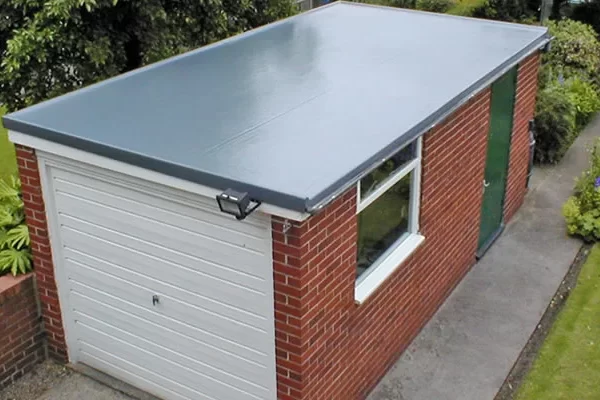With the United Nations convening conferences on climate change, people are becoming more and more aware of their carbon footprints. You too may be wondering as to what your home’s carbon footprint is and how you can lower it. Making your home carbon neutral may be really difficult but you can reduce your home’s carbon footprint considerably.
Easy tips to reduce carbon footprint at home
This article brings you a host of tips you can use to reduce your home’s carbon footprint:
1. Purchase local food
One of the best ways to reduce the carbon footprint of your home is to purchase food that is locally grown. This food has the added advantage that it is fresh. Exotic food products may seem enticing but they are grown in faraway places and then transported. This leads to them having a large carbon footprint. By opting out of buying exotic food products, slowly you will help in reducing their demand. Their supply will eventually fall in line with the reduced demand. Thus, the carbon footprint will be reduced on a larger scale over time.
2. Purchase food from local Vendors
Local food vendors procure fruits and vegetables for a short time period and sell them while they are fresh. Large supermarkets on the other hand store fruits and vegetables in refrigerators which increases their carbon footprint. Large supermarkets aim to provide a comfortable shopping environment and hence have ACs installed which also raise the carbon footprint. By opting to purchase fruits and vegetables from local vendors you get fresh food items with a reduced carbon footprint.
3. Reduce meat and dairy consumption
A splendid way to reduce the carbon footprint of your home is to reduce the amount of meat and dairy products you consume. Animals reared for their meat and dairy end up consuming a lot more resources than plants to produce the same amount of food. Hence, if you consume a lot of these products then your home’s emission will go up. It may not be possible to completely eliminate meat and dairy products from your life hence you should try to minimize consumption.
4. Reduce dependence on plastic
Plastics raise the carbon footprints of homes considerably. Try to minimize the use of plastic in your house. Take your own cloth bags whenever you go shopping rather than buying plastic ones every time. Eliminate single-use plastics from your house entirely. Try to shift to environment-friendly and biodegradable materials to satiate your household needs. The lesser plastic you use, the better.
5. Use natural methods of cooling
Air conditioners have now become a necessity for a lot of people. You should try to reduce your dependence on air conditioners as they consume a lot of electricity. Try to switch to more nature-friendly methods of cooling. Try to switch to water-coolers since they use water for cooling and have a much lesser carbon footprint than Air conditioners. Also, use thick curtains to block out the sun and thatch sheets to cover the balconies. All these methods are sure to reduce your home’s carbon footprint.
6. Use LED bulbs
Another good way to reduce individual emission level is to switch to more energy-efficient lighting. LED bulbs save a lot more electricity as compared to normal bulbs or CFL bulbs. It is recommended that you replace or your old lights with LED lights. Replace old bulbs with LED bulbs and old tube lights with LED tube lights. By switching to LED lights, you will not only reduce your home’s carbon footprint but also save money on your electricity bill. Thus, switching to LED lighting will provide a two-pronged benefit.
7. Try to use solar water heaters
Water Geysers consume a lot of electricity and are usually a must in winters. Even heating rods consume a lot of electricity and are even hazardous. To reduce your home’s carbon footprint, you can opt for solar water heaters. Solar water heaters have a solar cell on the roof of your house and end up providing energy-efficient water heating. You will also save a lot of money on your electricity bill since solar water heaters rely on solar energy.
8. Recycle
One of the most basic methods of reducing your home’s emission is to recycle things. This is something that you have been taught since childhood. Try to recycle materials as much as possible. If you cannot do it yourself, segregate your waste into recyclable and non-recyclable materials. This will allow your municipality to recycle the materials on your behalf. Recycling is also a cost-effective way since you can sell materials to scrap-sellers to earn some money.
9. Save electricity
Saving electricity is not just good for reducing the carbon footprint of your home, but also for saving money on your electricity bill. Electricity can be saved by elementary actions like turning off lights and appliances when not in use. You can also switch to more energy-efficient appliances to reduce the carbon footprint of your home. You should strive to save electricity and urge your entire household to do the same in order to reduce your home’s carbon footprint.
10. Switch to cycling
Motor Vehicles rely on fossil fuels to run. These fossil fuels leave a huge level of emission since their usage involves oxidation of centuries of sequestered carbon. Hence, you should avoid using motor vehicles whenever possible. Try to switch to cycling instead. Cycles have a negligible carbon footprint since they do not use any fossil fuels. Hence, you should opt for cycling to cover small distances and also encourage others to do so. Cycling will also help you save the money you would normally spend on fuel. You can even opt for carpooling to reduce dependence on motor vehicles.
Final thoughts
In the 21st Century, reducing the planet’s carbon footprint has become a priority. This is due to rapid climate change in recent years. You can do your part by reducing your home’s carbon footprint and urging other households to do the same. By implementing some of the techniques given in this article, the carbon footprint of your home will get reduced considerably.





